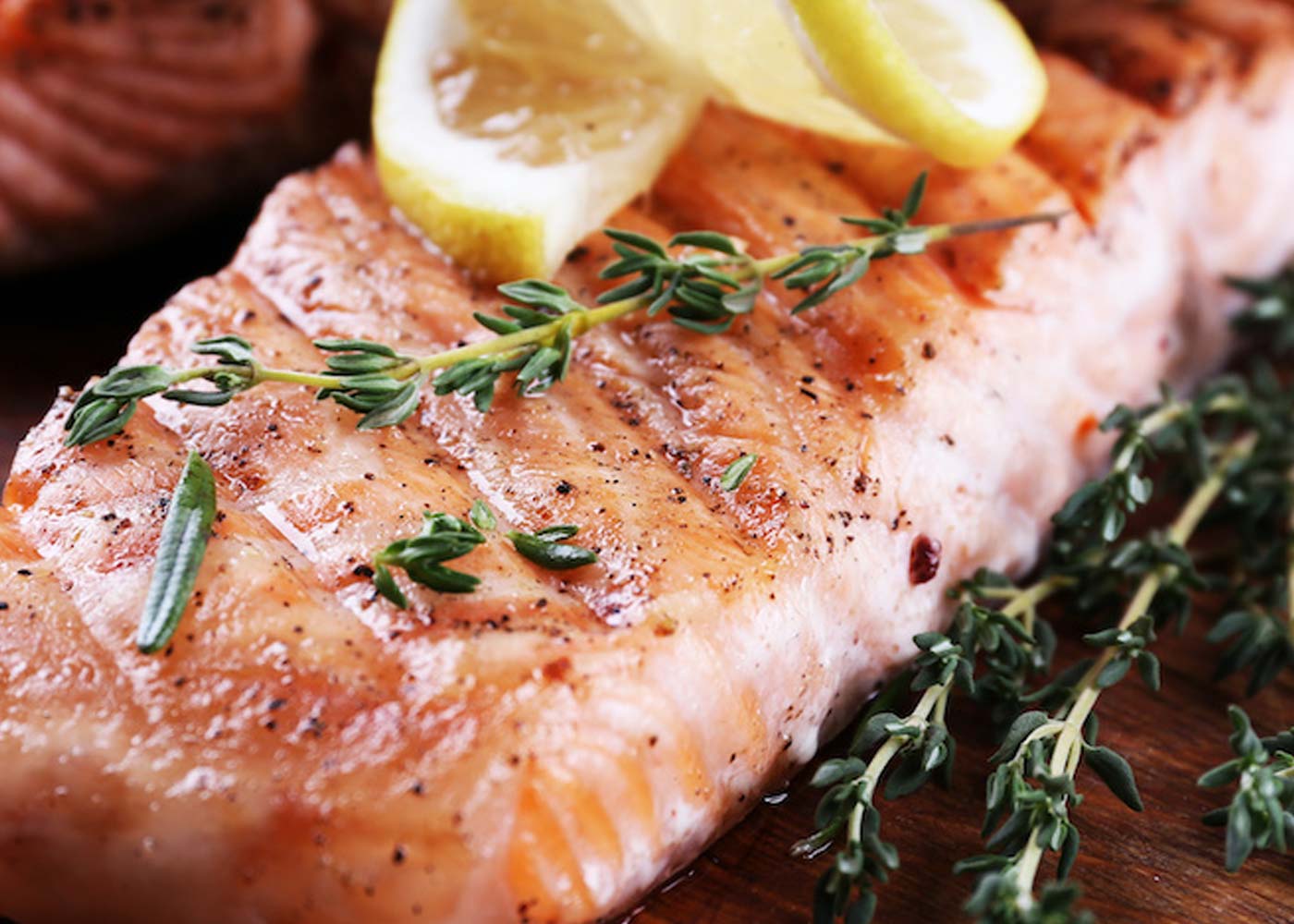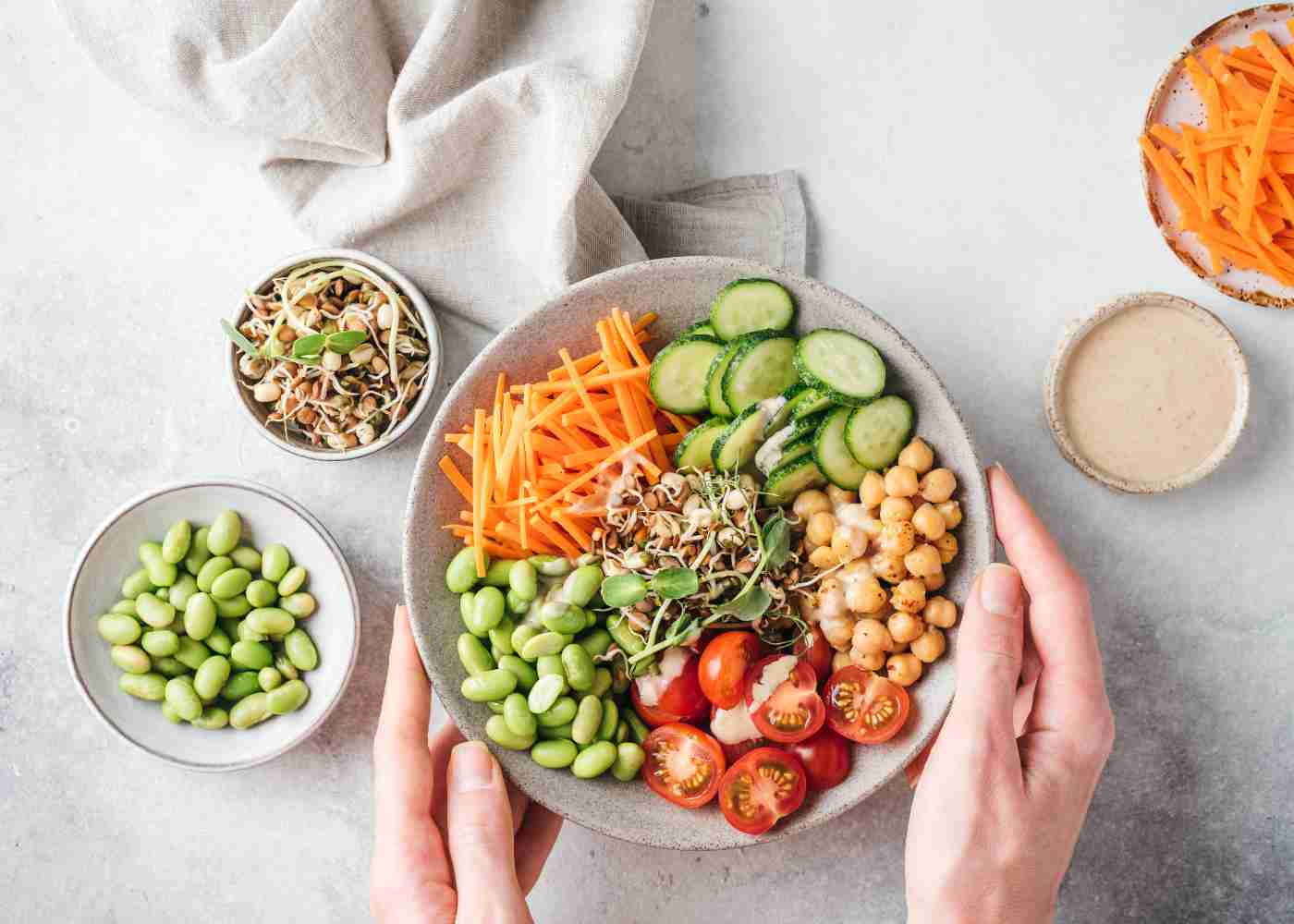
Salmon can be seasoned in a variety of ways, ranging from
savory herbs to sweet marinades. Learn how to properly season salmon for
various salmon recipes.
Why Should Salmon Be Seasoned?
Salmon is a firm, flaky fish with a mild flavor that blends
well with other flavors. Seasoning salmon with spices, herbs, and marinades can
improve the flavor and help the fish retain moisture and firmness while
cooking. Brining salmon with seasonings helps to preserve its pink color by
preventing the release of albumin, a white semi-solid protein that can form as
the fish cooks.
To make savory, tangy, or sweet salmon recipes, experiment
with different flavor combinations. Parsley, tarragon, lemon juice, balsamic
vinegar, and miso sauce are popular flavors for all types of salmon.
The Best Seasoning for Salmon
The best seasoning for salmon is determined by the method of
preparation. Consider the following seasoning possibilities:
Herbs: Before pan-frying or baking salmon, coat it with
fresh or dried herbs such as rosemary, thyme, oregano, or dill. Dry rubs and
premade mixes, such as Italian seasoning, can also be used.
Glazes: A glaze is a sauce that can be applied to the salmon
while it is cooking, such as a brown sugar glaze, a lemon glaze, a garlic and
honey glaze, or a mustard glaze.
Marinades: To infuse flavor into salmon, soak it in a
marinade before cooking. Soy sauce, honey, lemon juice, and pesto are popular
flavoring ingredients for salmon marinades.
Sauces: Dressings can be used after the salmon has been
cooked to add texture and flavor. Salmon can be served with barbecue,
hollandaise, or beurre blanc sauces.
Spices: Dried spices like onion powder, garlic powder, and
cumin can enhance the flavor of salmon. Smoked or sweet paprika can be used to
add smokiness to the salmon. Chili powder, cayenne pepper, jerk seasoning,
Cajun seasoning, or Chinese five-spice powder can be used to add heat. Create
your own flavors and store them in an airtight container.
How to Season Salmon: 5 Seasoning Tips
Consider the following seasoning tips whether you're
marinating, glazing, or simply seasoning your fish with salt and pepper:
1. Add salt just before cooking the salmon. It is
critical to salt salmon immediately before cooking it. If you salt the fish too
soon, it will lose too much moisture.
2. Brush the salmon with butter or olive oil. Brush the
flesh side of the salmon with melted butter or olive oil, then season with
herbs and spices. The fat will help the seasoning adhere to the salmon and keep
it from sticking to the pan.
3. Cut the salmon skin. Season the salmon on both
sides. To enhance the flavor of the salmon, pierce the skin and rub seasoning
inside before applying a dry rub or spice mixture.
4. Select a marinade that is oil-based. If the marinade
contains too much water, crisping the salmon skin can be difficult. To keep the
salmon tender on the inside and crispy on the outside, marinate it in an
oil-based marinade.
5. Keep the marinating time to a minimum. Marinate the
salmon for up to 30 minutes if using a vinegar or citrus marinade. The acid can
cause the salmon to degrade, resulting in mushy fish.
6. Measure the seasonings. In general, one tablespoon
of seasoning per half pound of salmon is recommended. In a small mixing bowl,
evenly distribute the seasonings.
8 Salmon Recipes
Salmon is a quick and easy weeknight meal. Serve the fish
with rice or vegetables, such as roasted brussels sprouts or sauteed green
beans. Consider the following simple recipes, each with a different seasoning
combination:
1. Baked salmon: Season the salmon with lemon slices and
fresh herbs such as parsley, dill, chives, or thyme in this simple baked salmon
recipe.
2. Lemon salmon: In this simple baked lemon salmon recipe,
the salmon is cooked on a sheet pan or baking sheet using the broil setting in
the oven. Combine room-temperature butter, parsley, Parmesan cheese, minced
garlic, lemon zest, and lemon juice to make the lemon garlic butter.
3. Maple salmon: Salmon filets are coated in a thick,
flavorful glaze made of pure maple syrup and savory pantry staples before being
roasted in this sweet-and-savory dish. Maple salmon is seasoned with maple
syrup, soy sauce, sesame oil, rice vinegar, grated garlic, ginger, white
pepper, and red pepper flakes.
4. Miso salmon: To make miso salmon, marinate salmon in
saikyo miso (sweet white miso from Kyoto), mirin, sugar, and sake.
5. Pan-seared salmon: The only seasonings required for this
simple pan-seared salmon recipe are salt and pepper, which takes about five
minutes to prepare and about fifteen minutes to cook from start to finish.
6. Pesto salmon: To make pesto salmon, coat salmon in
fresh basil pesto and bake until just cooked through. The basil pesto flavors
the salmon while also keeping it moist while baking.
7. Salmon tacos: Make salmon tacos for a Mexican-inspired
twist on salmon. Salt, garlic powder, onion powder, chili powder, and black
pepper to taste.
8. Teriyaki salmon: Make teriyaki salmon with store-bought
or homemade teriyaki sauce, a savory Japanese main course consisting of grilled
or roasted salmon filets glazed in teriyaki sauce. Soy sauce, sugar, mirin,
sake, sesame oil, cornstarch, ginger, and minced garlic are all used in this
recipe.
5 Tips for Cooking Salmon
It is simple to learn how to cook salmon. Salmon can be
cooked in a variety of ways, including pan-frying, baking, and en papillote
(inside folded parchment paper or aluminum foil). Consider the following tips
when preparing salmon:
1. Select the appropriate cut of salmon. Salmon is typically
sold in the form of fillets, steaks, or whole fish. A salmon fillet is a small,
meaty section of the salmon's side with few bones. A salmon steak is a
larger-boned cross-section of the salmon.
2. Determine your seasonings with care. Salmon requires
little seasoning to be flavorful. You can season it simply with salt and black
pepper, or with lemon juice, fresh herbs, balsamic vinegar, Dijon mustard,
butter, minced garlic, and whatever other flavors you want.
3. Dry the salmon to ensure crispy skin. Although
skinless salmon is available, salmon skin can be delicious when cooked
properly. Crispy salmon skin is simple to achieve. While your pan heats up,
thoroughly dry the skin-on salmon with paper towels. Then, sear the salmon
skin-side down in a pan, such as a cast-iron skillet or a nonstick pan, over
high heat. To get crispy skin on the salmon, broil it in the broiler or bake it
in the oven with the skin side up.
4. Ensure your salmon cooks thoroughly. Salmon has a
short cooking time and can be eaten when it's slightly rare in the middle,
though the USDA recommends an internal temperature of 145 degrees Fahrenheit.
If you want to follow the USDA's recommendations, invest in a good instant-read
thermometer. Otherwise, test for doneness by gently poking the top of the flesh
with your finger; it should easily flake apart. Alternatively, insert a sharp
knife into the thickest part of the fillet to check the color: light pink,
opaque salmon is well-cooked, whereas darker pink, more translucent salmon is
still somewhat rare. Insert a metal cake tester or thin skewer into the thickest
part of the fillet to avoid damaging the flesh, then touch the side of the
tester to the area between your lower lip and chin. If the fish feels warm to
the touch, it is fully cooked. If it's cold, it's unusual in the middle of the
day.
5. Know the source of the fish. Wild salmon is not the
same as farm salmon. The color of fresh salmon from the ocean is darker,
whereas farm salmon is lighter. Farm salmon is typically fatter than fresh
salmon and less expensive.




















